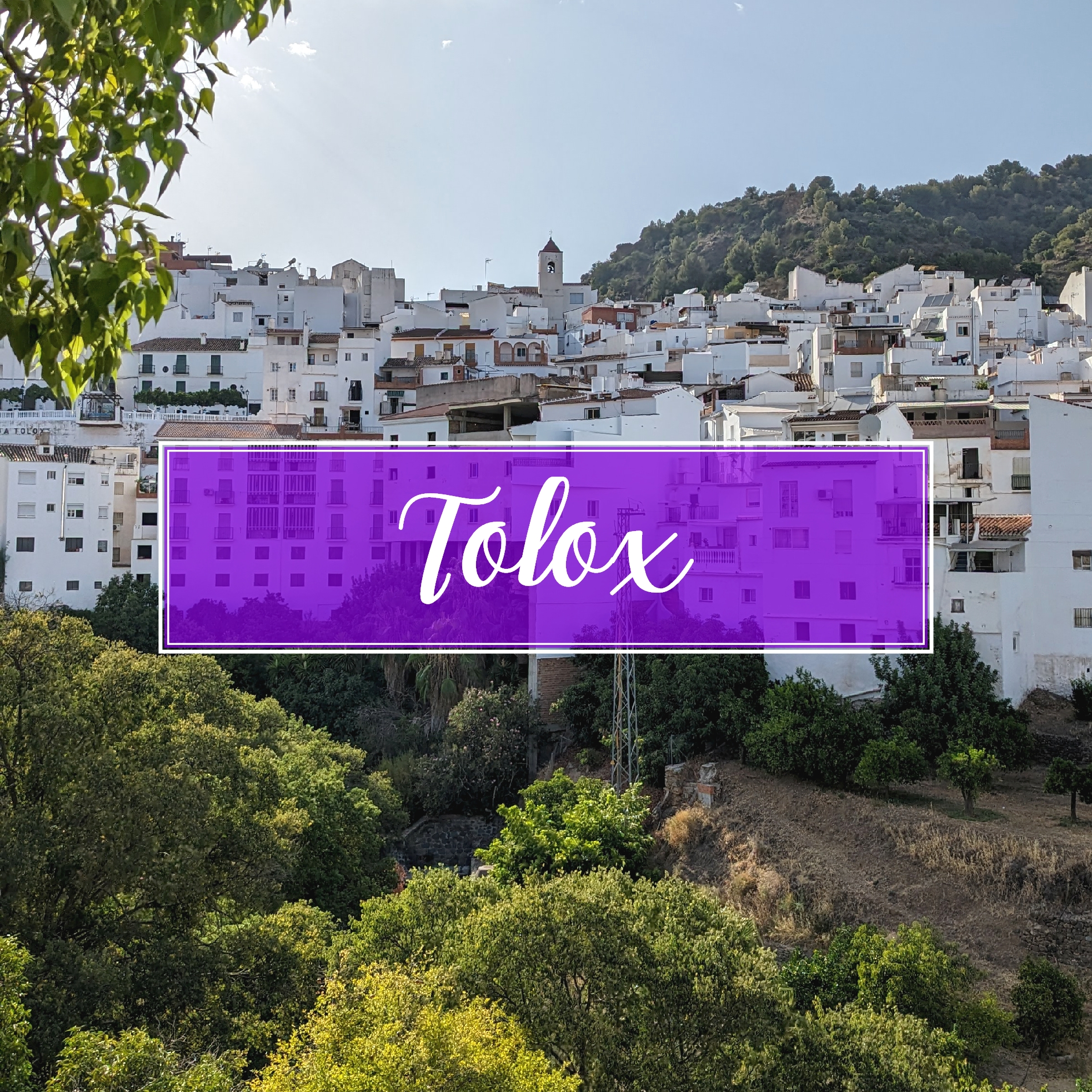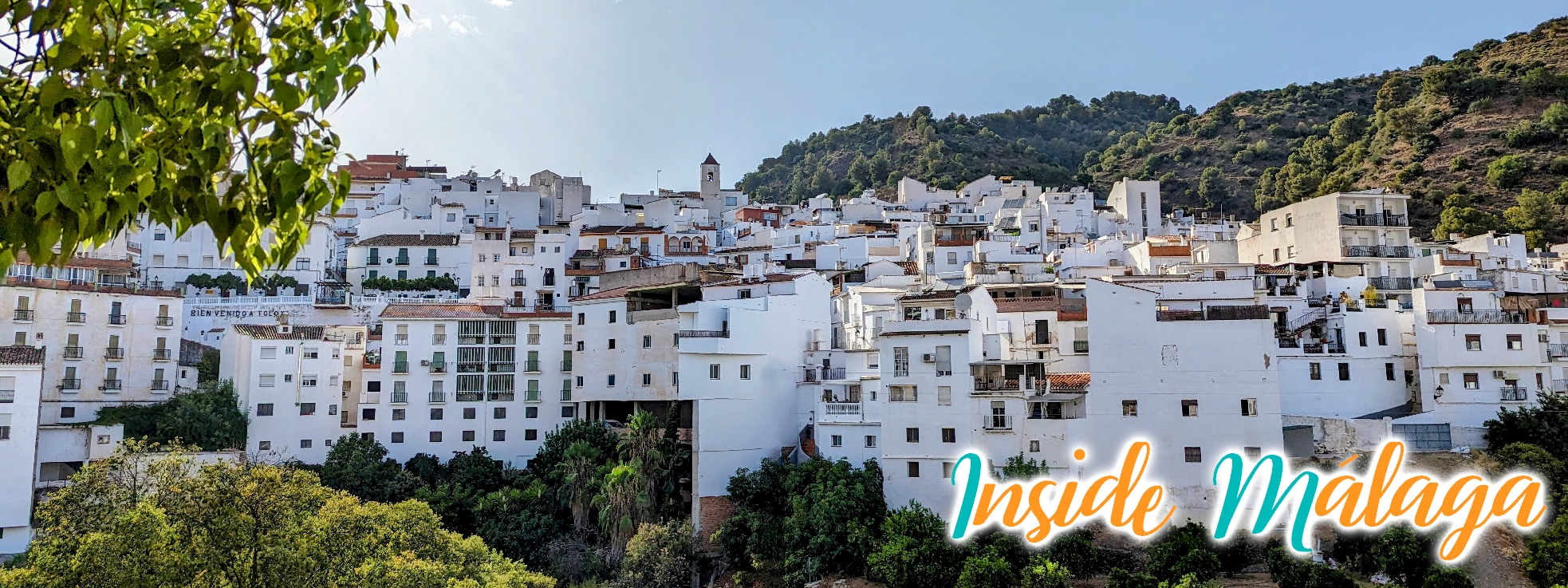Tolox is a picturesque village in Andalusia, located in the Sierra de las Nieves in the province of Málaga. Surrounded by mountains, it is known for its natural environment, thermal baths, and hiking trails, such as the path to Pico Torrecilla. The Sierra de las Nieves Natural Park, declared a Biosphere Reserve, offers stunning landscapes with pine forests and rich biodiversity. Tolox also stands out for its traditional culture and festivals, such as the “Fiesta de los Polvos,” reflecting the local history and customs.
Where is Tolox located
Tolox, is located in the interior of the province 57Km from Malaga capital with a population of 2.107 inhabitants. The town is located in the region of La Sierra de las Nieves.
Where to park in Tolox
Within the town there are not many parking options, as most of the streets are pedestrianized. We entered the town but as soon as we saw the slopes we turned around and parked just outside the town just past the Tolox welcome sign and we walked towards the town.
The origin of the name Tolox
The name of Tolox seems to come from “Tulos” which means high mountain or high rock.
Curiosities about Tolox
Tolox village, is known for his hot springs and fountains with healing purposes since its waters give off a gas that is great for our respiratory system.
Monuments and Places of Interest in Tolox
- Balneario de Tolox: Don José García Rey, a native of Tolox and a pharmacist, began a scientific study on the Tolox springs, emphasizing the gases for healing purposes that the spring water releases. In 1869 the inhalation spa of its waters was inaugurated, which attracts great athletes from all over the world.
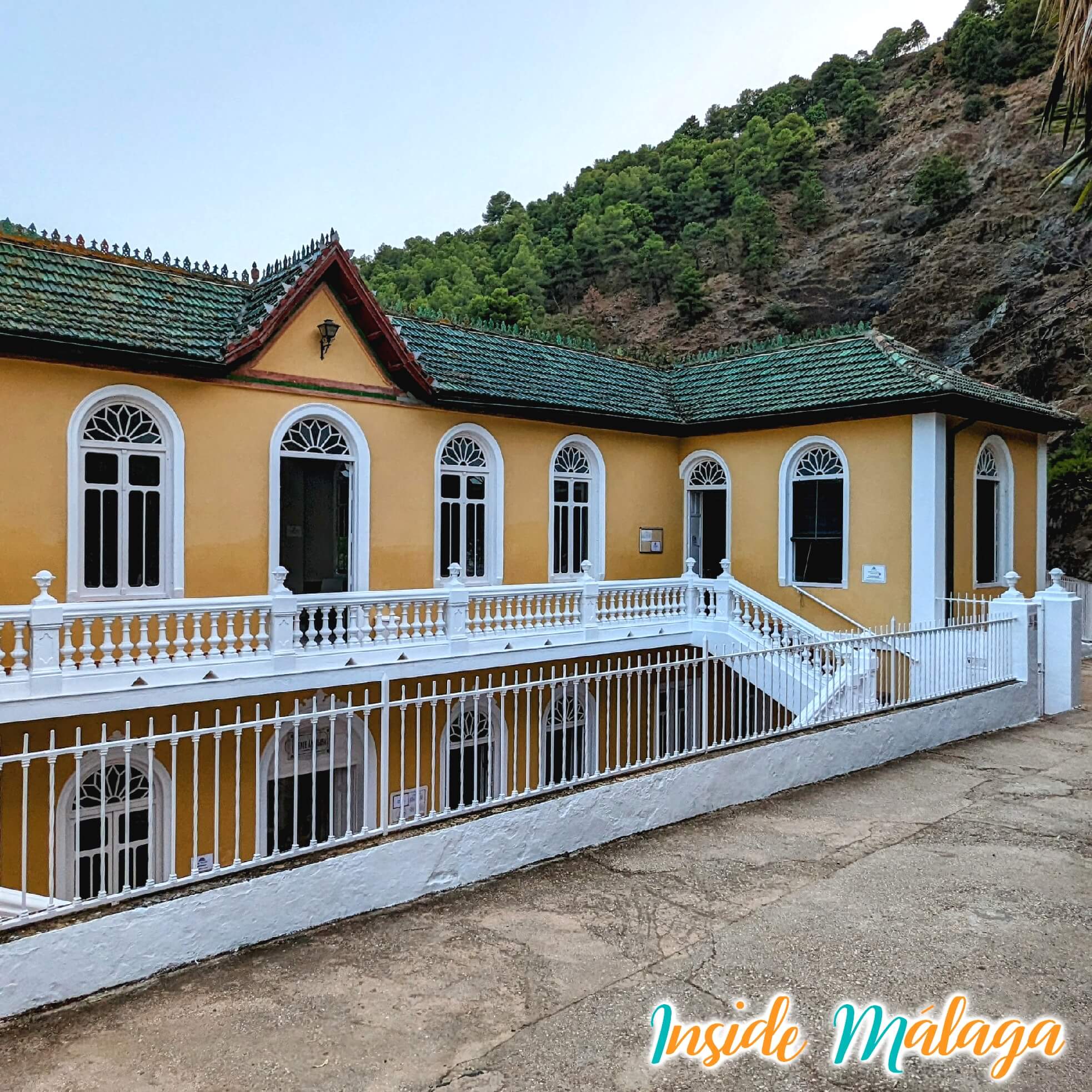
- Barrio Alto y Barrio Castillo: In the 9th century there is information that there was a castle in Tolox. Today only remains of a wall are preserved, which can be seen in its narrow alleys in the center and there are some remains inside some private homes. The Barrio Alto is a picturesque place with typical Andalusian streets, with steep alleys and corners full of flowers and traditional andalusian facades.
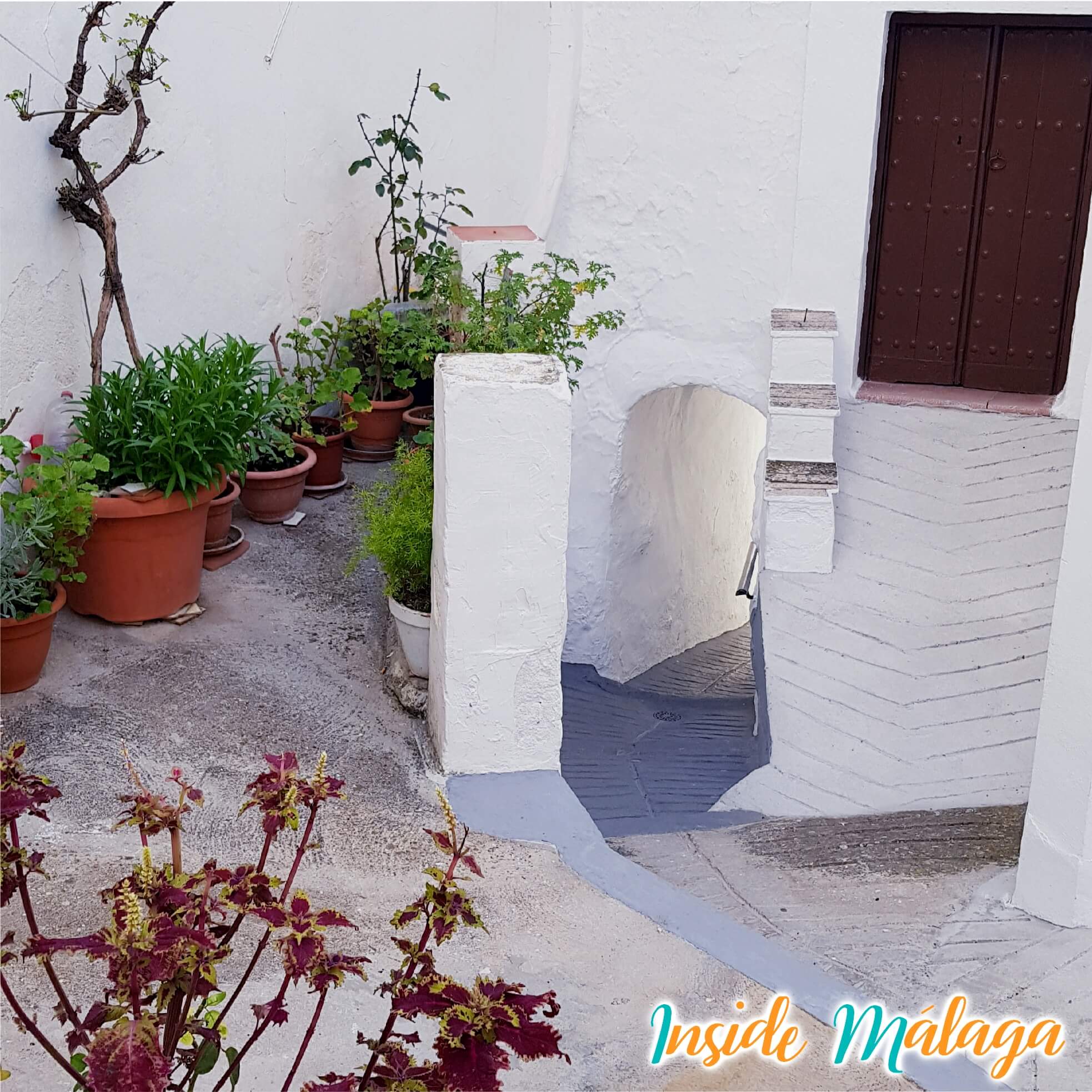
- House Museum of Popular Arts: Open since 1992, it is a museum set in the 19th century style. A museum where the three exhibition rooms take you to Tolox’s past. The exhibition, made up of objects, toys, and tools they used to work the fields, also has some of the parts from the last mill of Tolox. Besides, it also has an exhibition of images and photographs from the fifties.
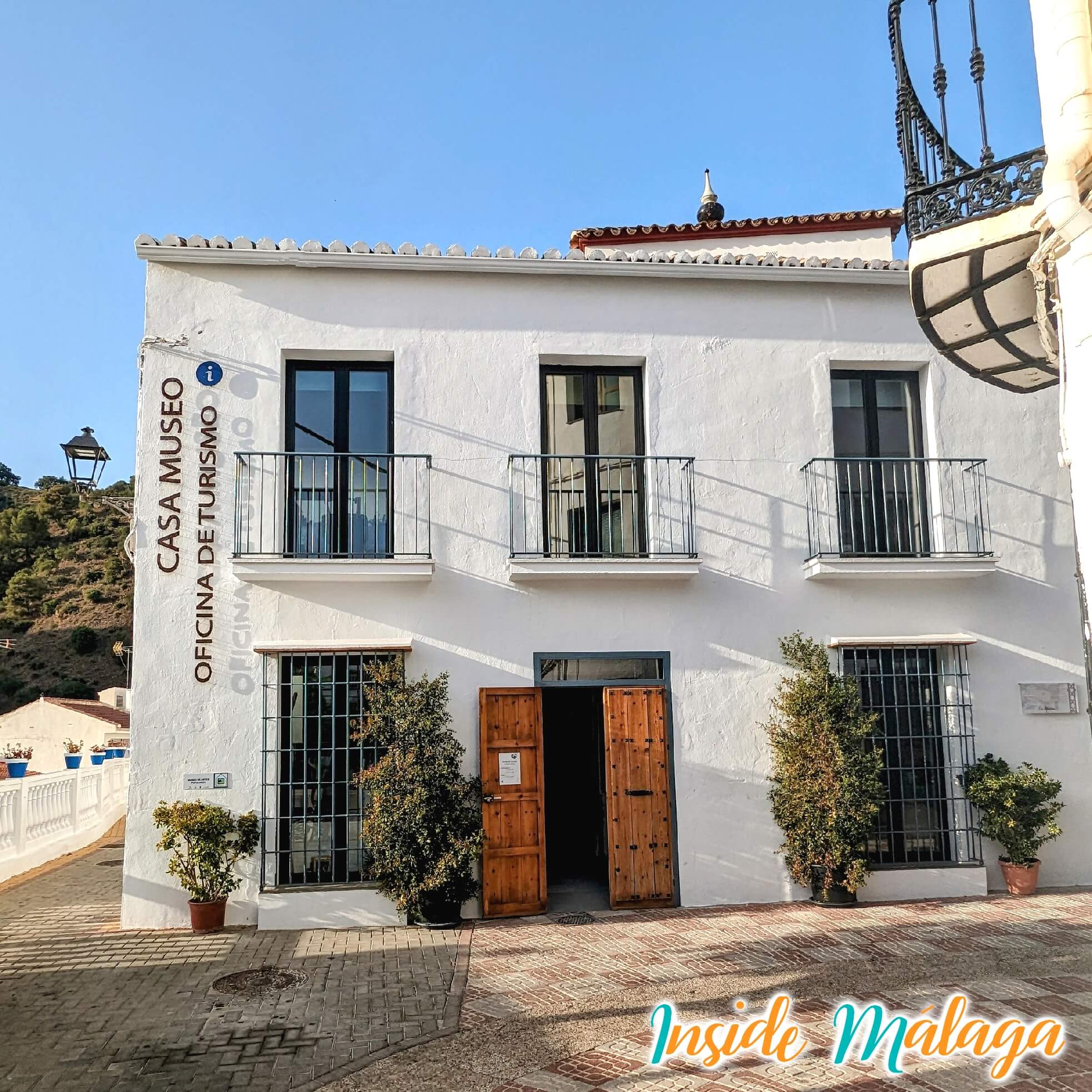
- Iglesia de San Miguel Arcángel: Built in 1505. It was in this church that Christians took refuge during the Moorish uprising of 1568. After a fire it was rebuilt in 1577 by the master of the Malaga Cathedral. The church tower was built on top of a former Minaret of the old mosque.
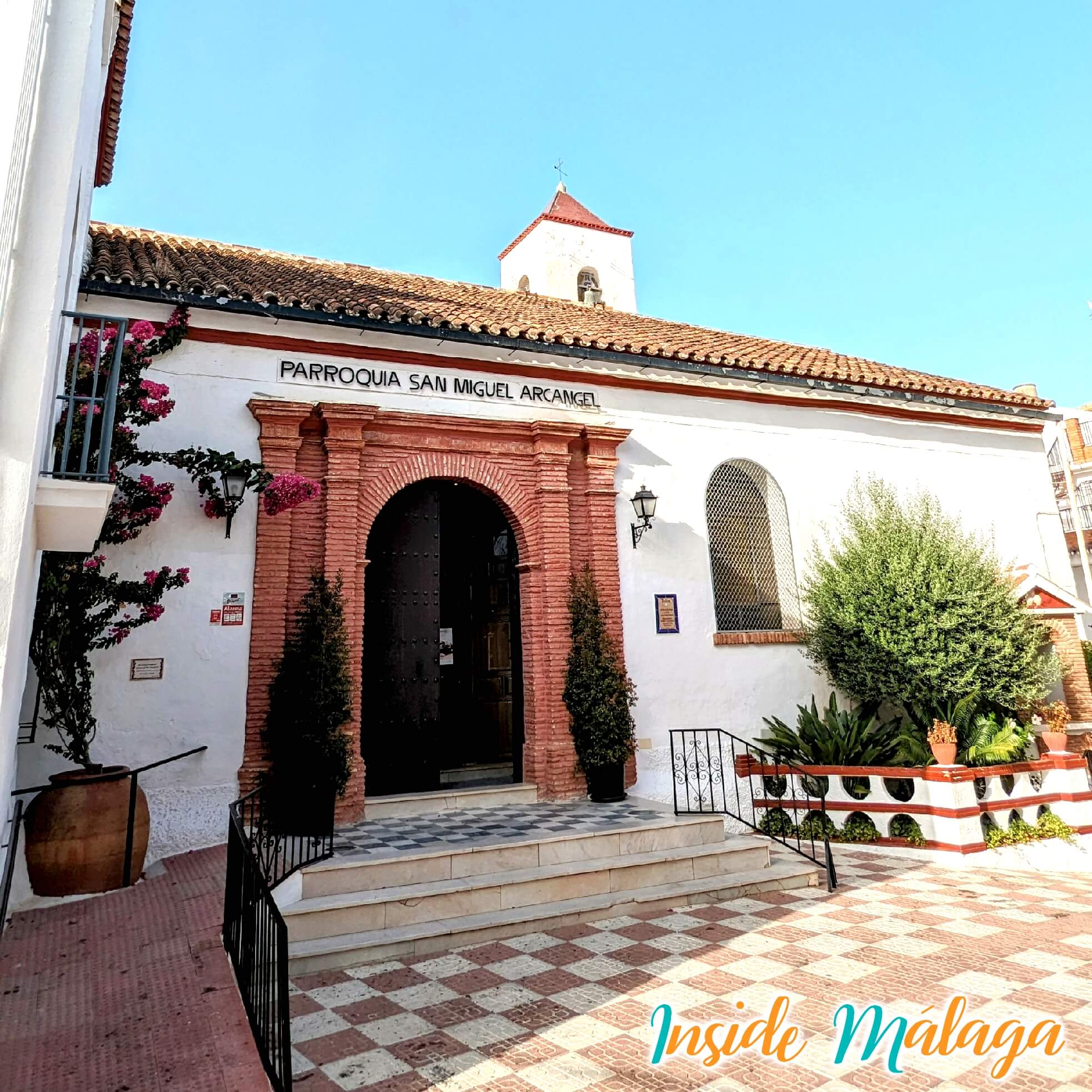
- Hermitage of San Roque: Built in the 80s in the 20th century about 2km from the municipality on the remains of a primitive hermitage in honor of the patron saint of the town, San Roque.
- Hermitage of Virgen de las Sierra: Built with natural stones from the area, forming a beautiful landscape, located in the heart of the Sierra de las Nieves, 5 km from the town of Tolox.
- Cueva de la Tinaja: A cave located in the Arroyo de los Horcajos in the Sierra de las Nieves Natural Park.
- Fuente del Mazacote
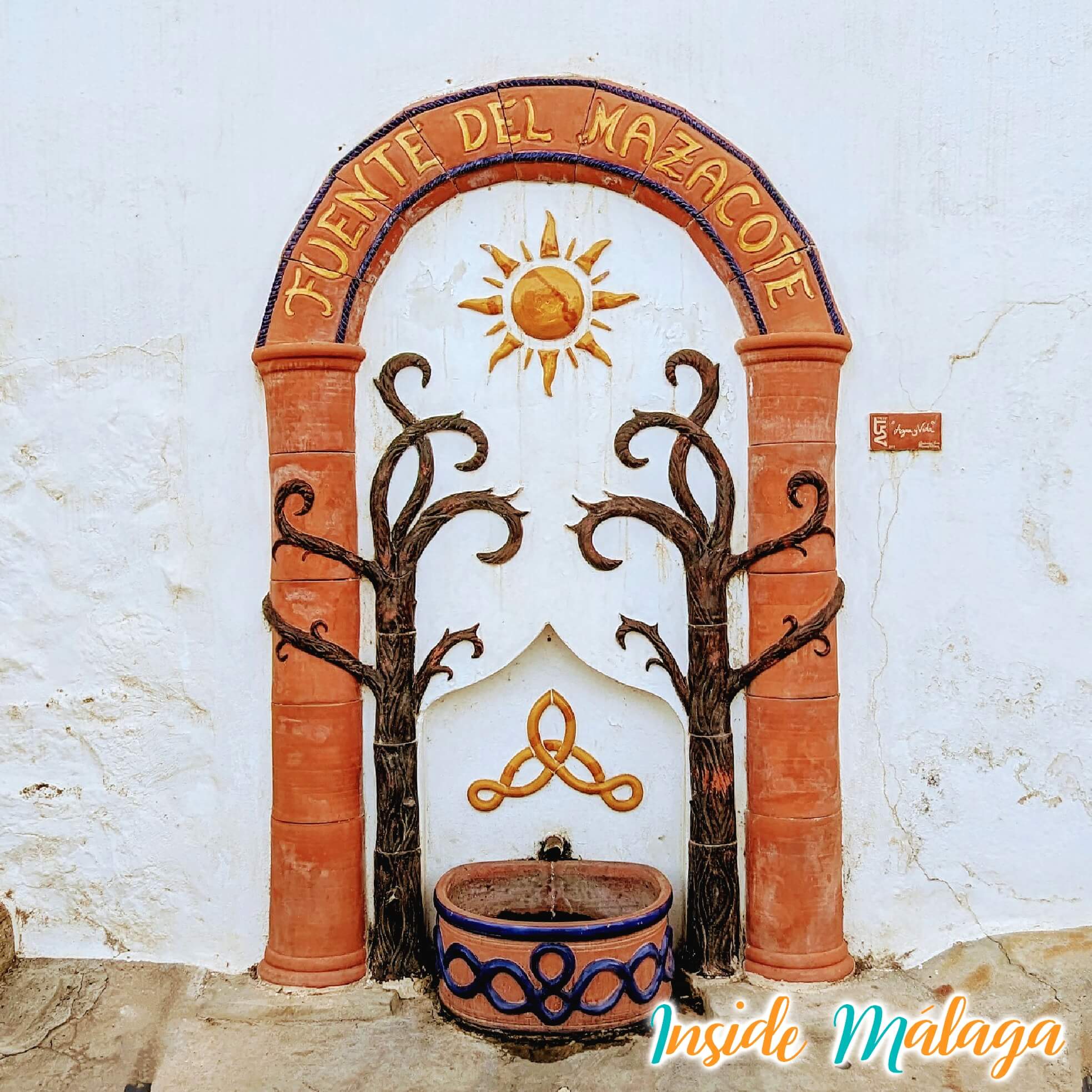
- Ceramic geckos: During your walk through the town you will observe and be able to follow three colors of geckos. Each one indicates a historical area of the town: Red (The farmhouse and fortress), Green (Interior of the fortress), Blue (Historical quarter).
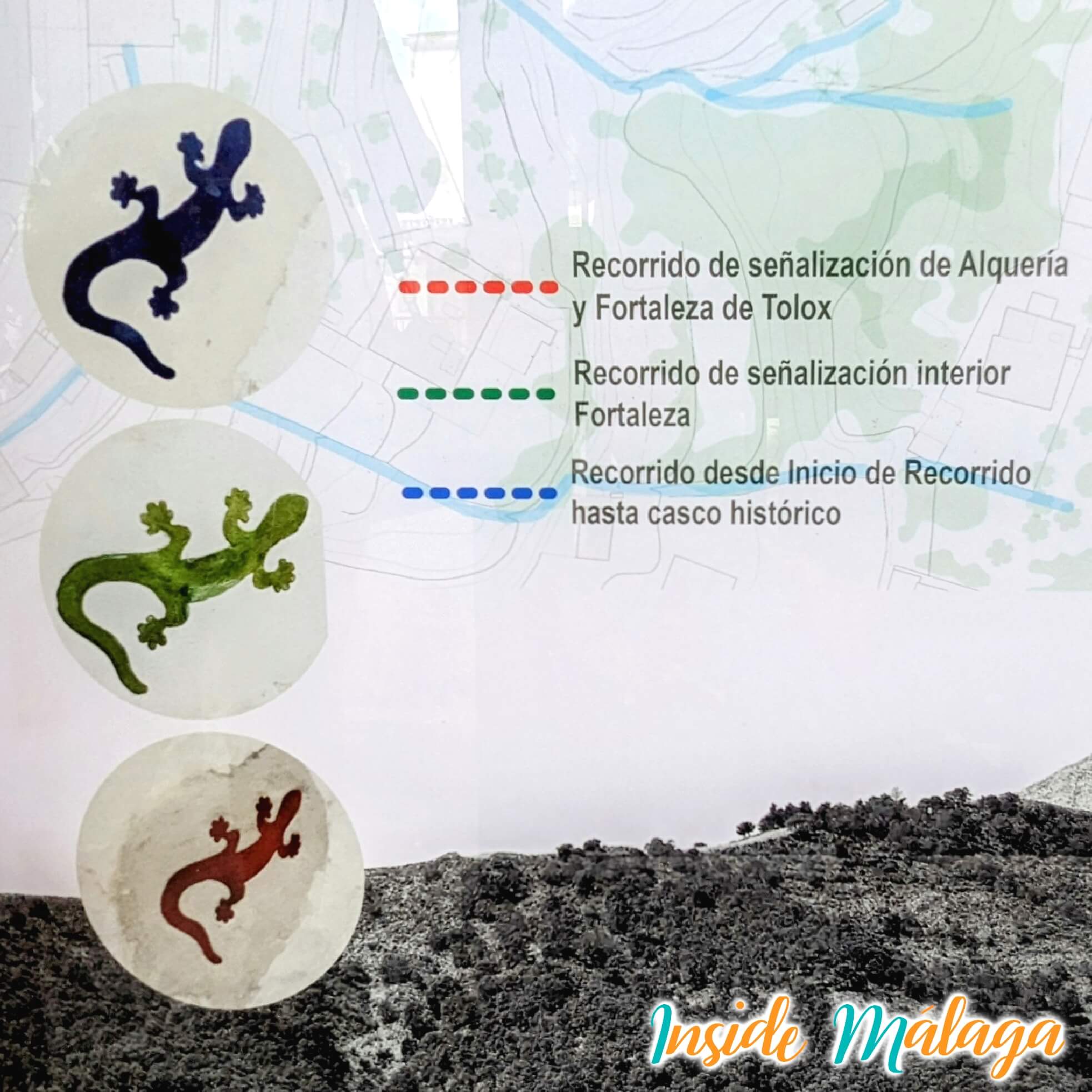
History of Tolox
On the outskirts of Tolox we find the cave “Cueva de la Tinaja” that shows the first settlements in the area where Neolithic remains have been found. The origin of the Tolox society begins in the Phoenician era or with the Tartessos, it began to be populated in Roman times. But it is in the year 883 when a fortification occupied by Omar Ben Hafsun during the rebellion against the Caliphate of Córdoba begins to be mentioned. After several sieges he was defeated by Abderramán III, who had the church destroyed to build a mosque or aljama. From this fortress you can still see remains of the wall and alleys in the Castillo neighborhood in the center of the village.
In 1485, the first future mayor of Tolox Sancho de Angula conquers the town in front of the Muslims who surrender to the Catholic Monarchs, the latter allow the permanence in the town with the condition that they declare their vassals respecting the Catholic religion, language and customs.
The privileges of the Moors began to suppress little by little causing great tension in the Moors, until reaching an open confrontation on Christmas 1539, the chronicles say that this confrontation was triggered by an altercation between two women, one Muslim and the other Christian. After escalating this confrontation, troops arrived that, after great efforts, managed to impose themselves on the Moors. The Moors fled, devastating the fields and punishing the farmers. This fact is commemorated every year on December 8 on the Día de las Mozas (“Day of the Girls”).
In 1571 Tolox was depopulated until by order of King Felipe II it began to repopulate with Christians from Córdoba, Seville and Galicia.
In the 19th century, after the investigations of Mr. José García Rey, a native of Tolox and pharmacist, who carried out the necessary studies to capture the mineral water from the Tolox spring. After discovering that the waters contain gases that are beneficial to the body. The spa was inaugurated in 1869, with the name of Balneario de Tolox or Balneario de Fuente Amargosa, turning this Spa into the authentic engine for tourism in the area.
Tolox festivities
February: Día de Los Polvos (Dust Day), it is a day part of the Tolox Carnival, together with the murgas and costume contest this festival is celebrated that consists of remembering an old tradition of the municipality where a waiter who pretended to the girl, had to dust her with powders of lime stones existing in the town, the waiter put all his efforts producing real assaults on the houses, and it was considered a true declaration of love. Today it is celebrated in the town square, where the neighbors are throwing talcum powder to the rhythm of music and dances.
Easter week
August: San Roque Fair
August 16: Patronal Festival of San Roque “La Coheta“. On this day the procession of the Saint takes place, who as soon as he leaves the temple is accompanied, through the narrow streets of the town, by numerous faithful who make the journey. As the patron passes by, the parishioners launch thousands of dozens of rockets into the sky, symbolizing the traditional Cohetá in which the image of San Roque is escorted throughout its journey through the streets of the town.
December 8: Day of the Mozas or “Day of the Cowbell“: The young people of the town sound conches and cowbells. A traditional festival originated by an event that occurred during Christmas 1539. The story goes that after the Reconquest, a small group of Moors remained in the town. It happened that two women, one Christian and the other Moorish, provoked a terrible dispute between the two sides. Then they asked the neighboring town for help and had the idea of coming playing conchshells and cowbells, with such a roar, similar to that of a battalion, that the Moors ended up fleeing.
Where to eat in Tolox
La Plaza Restaurant: Located next to the town hall of the town. This restaurant is part of a hostel. The menu is very varied with very careful and elaborate dishes of a very good quality. There are traditional dishes and others inspired by Asian cuisine. The value for money is worth it.
Where to sleep in Tolox
Hostal La Plaza: Accommodation in the heart of the town. The rooms are cozy, modern and clean. The staff at every moment attentive and friendly. The breakfast varied and of high quality.
Tolox gastronomy
- Bolus: variety of tomato soup, with eggs, oil, onion, salt and lemon.
- Samandoña casserole: with garlic and almonds.
- Empanadillas: pastries.
- Gazpacho: it is prepared cold with garlic, bread crumbs, oil, water, vinegar, tomato and salt, with or without pepper and cucumber.
- Maimones: local variety of garlic soup. Made with water, garlic, parsley, salt, oil and bread.
Fig bread “pintao”: pastry product whose main ingredient is fig, a local fruit (photo).
Roscos: pastries. - Sopeao: made with tomato, pepper, garlic, bread and lemon or vinegar.
- Oil cakes: pastries
For more information about Tolox Village: visit the City Council page
